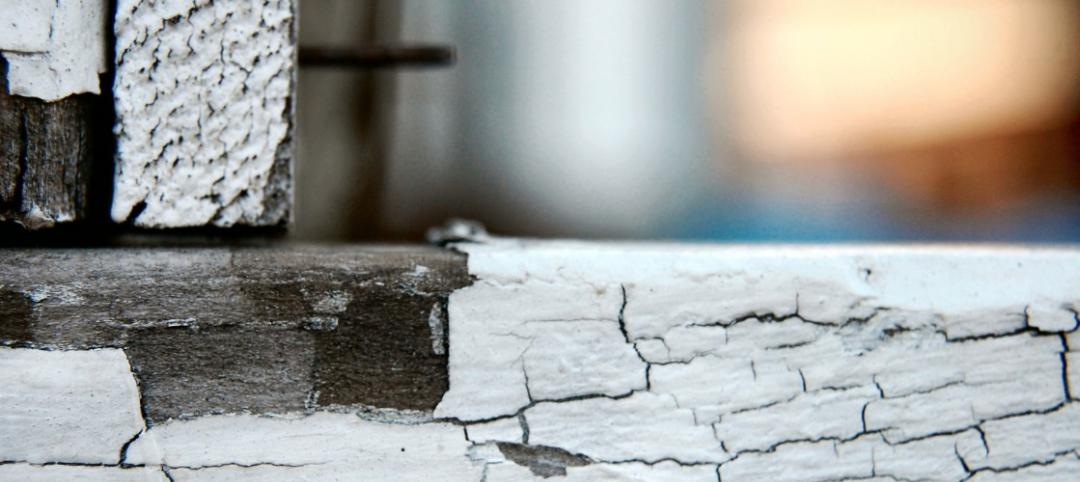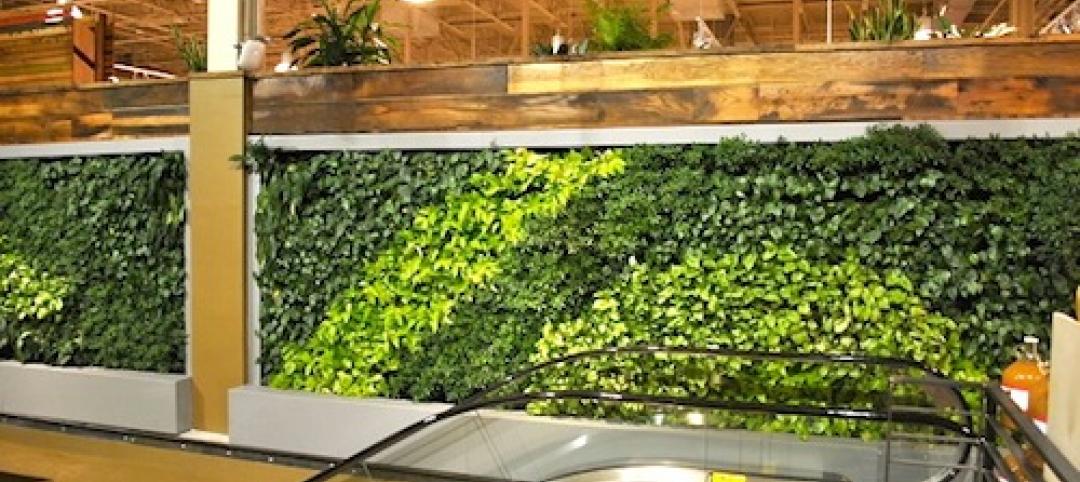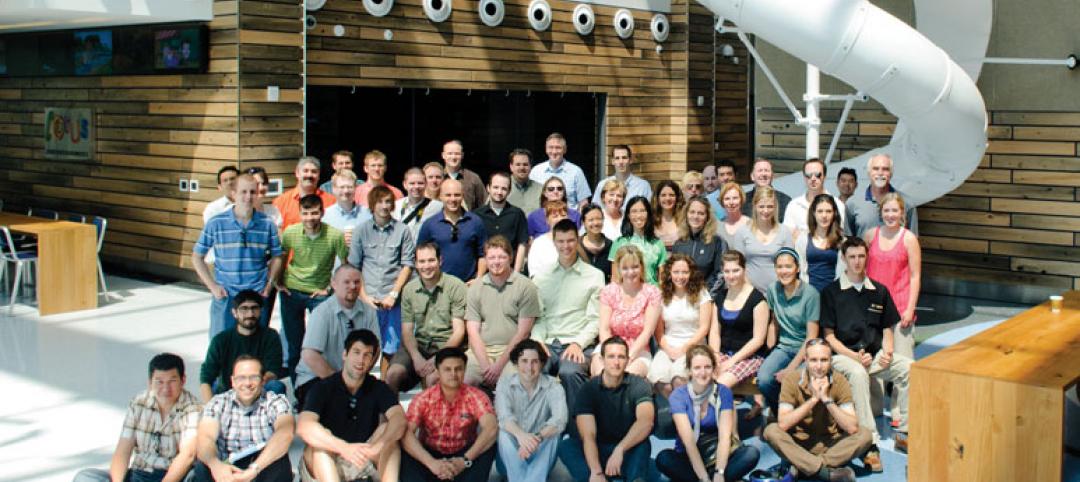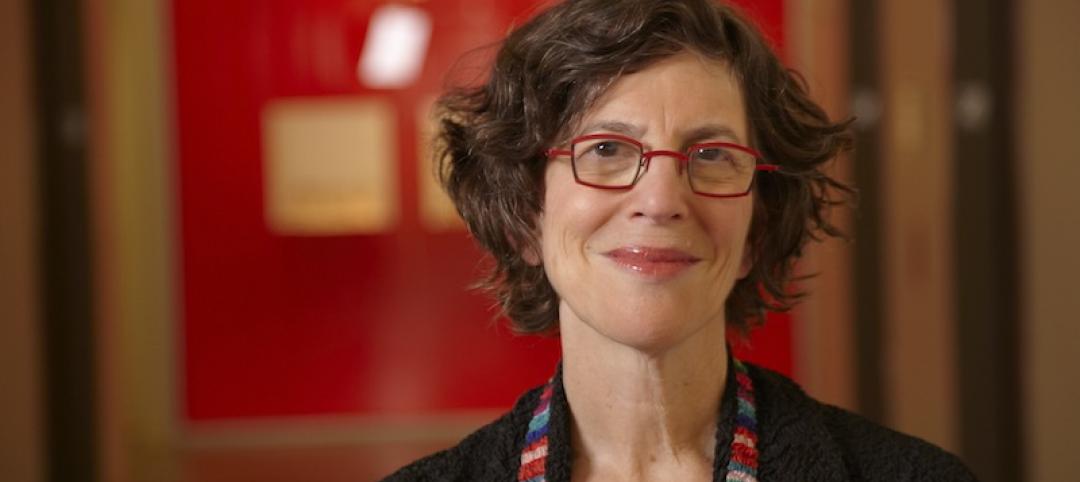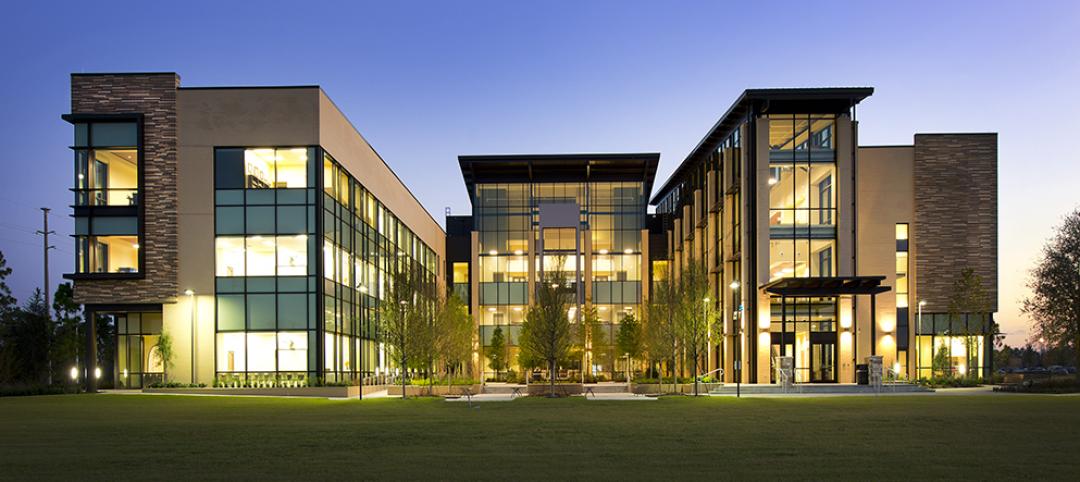 |
| A 12th floor footbridge connects the Center for Life Science | Boston to Children’s Hospital |
In the market for state-of-the-art biomedical research space in Boston's Longwood Medical Area? Good news: there are still two floors available in the Center for Life Science | Boston, a multi-tenant, speculative high-rise research building designed by Tsoi/Kobus & Associates, Boston, and developed by Lyme Properties, Hanover, N.H., and BioMed Realty Trust, San Diego.
The 777,600-sf private-sector research complex at 3 Blackfan Circle is 95% leased, but the second floor (45,000 sf) and the 18th (25,000-sf ) are open, and you'll be in good company. Tenants include a who's who of the Boston medical and research community: Beth Israel Deaconess Medical Center, Children's Hospital Boston, the Dana-Farber Cancer Institute, the Immune Disease Institute, and the Kowa Company. Oh, and to sweeten the deal, the building earned LEED Gold certification.
A high-rise research lab? And a wet lab facility with LEED Gold certification? In downtown Boston, rather than Cambridge, MIT's and Harvard's backyard?
 |
| Inside, lab-ready research spaces were fit out by tenants, including the Dana-Farber Cancer Institute. |
“We've done a number of spec properties before, mainly in the Cambridge market,” says David Clem, managing director of Lyme Properties, the project's original developer before BioMed Realty Trust purchased the building during construction. “This was our first significant building in Boston, and I'd been looking for the right site for about 15 years.”
What took so long was that Clem was adamant the project be located in the Longwood Medical Area—specifically, in the Blackfan Research District, one of nation's hottest centers of research activity. “My strategy was to locate within 500 yards of all the institutions driving the research,” says Clem, who knew the area's numerous research and medical institutions were anxious for additional research space.
Unfortunately, the Longwood Medical Area was so densely built that available land was basically nonexistent, so when Clem learned through social connections that a private school smack dab in the middle of Longwood was relocating, Lyme Properties quickly snapped up the one-acre site and began developing the project back in 2001.
 |
| Tsoi/Kobus & Associates designed the building’s public spaces, including the two-story entrance lobby, and about half the tenant fit-outs. The firm also designed a second-floor footbridge (not visible in this photo) connecting the second floor with neighboring Beth Israel Deaconess Medical Center. |
There was one problem, however: no one on the Building Team had worked on a project quite like this one. “We've all done spec lab buildings before,” explains Rick Kobus, FAIA, senior principal at Tsoi/Kobus & Associates, of the Building Team's collective experience, “but we hadn't done a high-rise spec lab building, we hadn't built one over 750 parking spaces, and we hadn't built one using an up-down construction technique.”
Other unknowns: how many tenants would occupy the building, how large or small their spaces would be, and how their spaces would be used. “This market hadn't been tested,” says Kobus. The process of figuring out the physical dimensions of the what, why, and how of the project resembled a jigsaw puzzle, as architect and developer pieced together various combinations. Would there be multi-floor tenants? What about half-floor occupancies? What were the implications of the many lease configurations for mechanical space and shaft space?
In they end they concluded that, for the building to work, tenants would have to lease a minimum of a full floor. To accommodate a mix of tenants requiring smaller or larger spaces, the building was designed with two basic shell floorplates: floors 2-12 are L-shaped plans offering roughly 45,000 sf, while floors 14-18 are rectangular plans offering roughly 25,000 sf. (Only two tenants occupy a single floor, and those who do lease the larger floors.)
 |
| This lounge is part of the Immune Disease Institute’s lab space. IDI is a nonprofit research and educational institution that’s affiliated with Harvard Medical School and receives about $38 million in annual support. |
The fact that there even are 18 floors to configure is unusual because building codes typically limit the use of high-hazard materials above 65 feet. “There's a strong motivation to keep research buildings lower, so there probably won't be another high-rise building like this, at least not in Boston,” says Kobus.
The building's architecture played a key role in why the project was allowed to reach high-rise status. Before the Center for Life Science | Boston was built, virtually every building within the Blackfan Research District (which accounts for more than three million sf of biomedical research space) had a uniform 12-story building height—for no other reason than that's just the way it was always done. “When we looked at putting another 12-story building in there, we thought the urban design character of the space was pretty awful with an unbroken, 12-story-high wall of building stretching more than 1,000 feet,” says Kobus. “We all thought it would be the wrong gesture.”
Instead, they designed part of the $197.2 million building at 12 stories and added a tower portion stretching to 22 stories (18 occupied floors, and four floors of mechanical, including a boiler plant and chiller plant). The Boston Redevelopment Authority liked what they saw and gave its approval to the tower.
 |
| The Dana-Farber Cancer Institute occupies the building’s 11th floor, and this break-out space is part of its 45,000-sf of research space. The Institute’s facilities are split roughly 50/50 between wet/dry labs, with approximately 100 researchers working in the Center for Life Science | Boston. |
The building's height isn't the only reason its architecture stands out. “We wanted a building that expressed the high-tech science going on inside,” says Kobus who designed a building where exterior walls slant and curve and are wrapped in a high-efficiency curtain wall. Kobus refers to the corner tower as a modern-day campanile that marks the center of research activity in the Longwood Medical Area.
Interior architecture was a different story completely. “We knew we wouldn't be the architect for all the tenant fit-outs, so we had to create a simple plug-and-play framework that other architects could easily utilize,” says Kobus. That lab-ready framework includes dedicated connections for exhaust fans, back-up emergency electric, pH neutralization systems, and dedicated shaft space, among other things. Extra-high ceiling heights of 15½ feet make it easy to accommodate individual HVAC and piping requirements. Tenants also have dedicated storage space on the ground level near the loading dock. Tsoi/Kobus & Associates wound up designing almost half of the tenant fit outs, as well as all tenant common spaces and the building's public spaces.
The Center for Life Science | Boston earned LEED Gold certification, so sustainability also figured heavily into its design, despite the Building Team's limited experience with LEED back in 2001. (See “Green Credentials” for the building's sustainable achievements.) “We had no idea where the project would wind up,” says Sara Mills-Knapp, sustainable design coordinator for Tsoi/Kobus & Associates. “In the beginning we just anticipated LEED certification, not a specific level.”
 |
| A high-efficiency curtain wall brings significant amounts of natural light inside, brightening the reception area for the Immune Disease Institute and helping the 777,600-sf high-rise earn LEED Gold. Tenants were encouraged—but not required—to pursue sustainable fit-outs . |
In fact, when the project began the LEED process, it was as one of the first pilot projects for LEED Core & Shell. “Working as a pilot program was hard because there were no standards,” says Mills-Knapp, but Lyme Properties wanted to offer tenants a higher-performing lab building so the team sorted it out as they went along. Tenants themselves aren't required to build green, but it's suggested they consider it. “If you're building a base building that has such efficient systems, tenants can't help but be influenced,” says Mills-Knapp.
The Building Team applied for several innovation credits when submitting the LEED documentation, and while they didn't get points for the up-down construction, this method proved to be one of the building's key successes. According to Shawn Seaman, project executive at project manager William A. Berry & Son, Danvers, Mass., up-down construction shaved four or five months off the building's construction schedule. That's because the Building Team was able to excavate the site (six floors below-grade, mostly parking) at the same time 22 floors of steel framing were being erected. “The process resembles more of a mining operation than an actual excavation,” says Seaman, who was aided by an early-stage BIM model (this was 2001) to coordinate concrete, structure steel, curtain wall, and MEP work with the Building Team members.
Up-down construction was ideal for this project because the small site is surrounded by buildings on four sides, which severely limited excavation options, but there is a downside. “We don't use this process very often because there's a cost premium to doing it this way,” says Seaman. “In this case, however, time was money so we wanted to get the building up quickly and get tenants moved in.”
Despite all the unknowns the Building Team figured out along the way, they created a state-of-the-art research facility that opened in 2008 and is 95% leased, earned LEED Gold, and sold for a record price of more than $1,000 per sf when BioMed Realty Trust purchased the property from Lyme Development soon after construction began.
Related Stories
| May 3, 2013
5 common failures in paints and coatings
As experienced designers, contractors, and owners know, most paint and coating problems are correctable, but some are especially stubborn to address. Here is a partial compendium of typical failure modes and methods for addressing the problem.
| Mar 21, 2013
Best Firms to Work For: Enermodal Engineering is green to the core
At Enermodal Engineering, there’s only one kind of building—a sustainable one.
| Mar 10, 2013
Walgreens to build first net-zero energy retail store
Walgreens announced plans last week to build one of the nation's first net-zero retail stores. The Evanston, Ill., location will utilize solar panels, wind turbines, geothermal technology, LED lighting and ultra-high-efficiency refrigeration to produce energy equal to or greater than the building consumes.
| Feb 25, 2013
HOK sustainability expert Mary Ann Lazarus tapped by AIA for strategy consulting position
Mary Ann Lazarus, FAIA, LEED® AP BD+C, has accepted a two-year consulting position with the American Institute of Architects in Washington, DC. Her new position, which begins March 1, will focus on increasing the AIA's impact on sustainability across the profession. The St. Louis-based architect will continue consulting at HOK.
| Jan 7, 2013
Jerry Yudelson's issues his "Top 10 Green Building Megatrends" for 2013
Yudelson, a Contributing Editor to Building Design+Construction, says, “It looks like a good year ahead for the green building industry. Based on our experience, it seems clear that green building will continue its rapid expansion globally in 2013 in spite of the ongoing economic slowdown in most countries of Europe and North America. More people are building green each year, with 50,000 LEED projects underway by the latest counts; there is nothing on the horizon that will stop this Mega-trend or its constituent elements.”
| Nov 20, 2012
SchenkelShultz-designed Valencia at Lake Nona certified 3 Green Globes
Featuring the latest technologies, the three-story, academic facility includes academic spaces and teaching laboratories, student services, a book store, library, café, a Dean’s suite and administrative offices.
| Nov 14, 2012
Lutron introduces new roller shade fabric, Sensor Layout and Tuning Service at Greenbuild 2012
Light control manufacturer Lutron Electronics partners with Mermet and announces new sensor calibration service.


